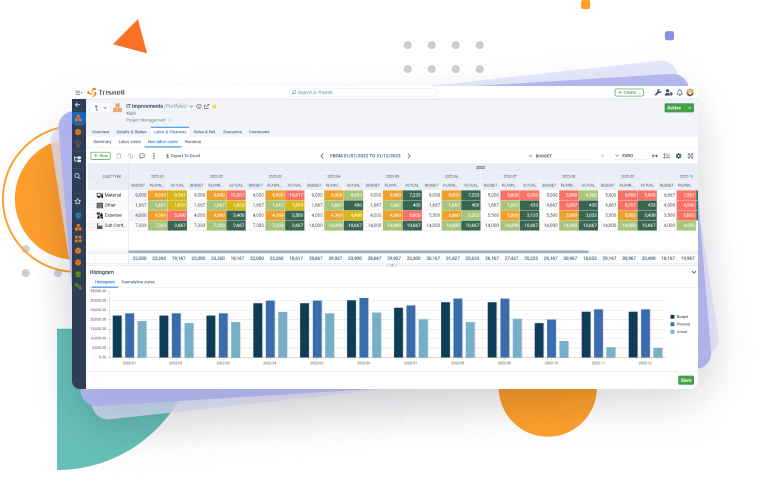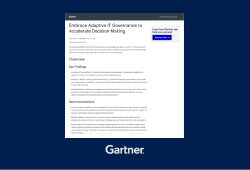ESG principles, frameworks and best practices for Project Management

Can a company truly be competitive and sustainable without integrating ESG Principles into Project Management? In today’s business landscape, where ethical leadership and social responsibility are no longer optional but a social demand, companies must adapt if they want to ensure their long-term viability.
What does it mean to integrate ESG principles into Project Management? Companies that incorporate ESG criteria into their projects not only mitigate risks but also drive innovation, strengthen stakeholder relationships, and secure sustainable growth.
In this article, we will explore:
- The core ESG principles and their impact in Project Management.
- The most suitable ESG frameworks for ensuring sustainable projects.
- Best practices for effectively integrating ESG into project management.
What are ESG principles? Definition and Scope in Project Management
ESG principles in project management are a strategic approach that incorporates environmental, social and governance factors in project planning, execution and monitoring. Its purpose is to ensure that projects contribute to sustainability, promote ethical business practices and generate a positive impact on society.
For companies, ESG is no longer just about corporate social responsibility—it is a critical strategy for competitiveness and long-term sustainability. Regulators, investors, and customers now demand measurable ESG indicators, making them a key success factor in project management in today’s business environment.

PROJECT PORTFOLIO MANAGEMENT
Transform ESG goals into real project outcomes
Track sustainability KPIs, align initiatives, and ensure regulatory compliance with Triskell’s PPM solution.
Core ESG principles: Sustainability, Responsibility & Governance
ESG is built on three fundamental principles:
- Environmental management.
- Social responsibility.
- Governance and ethical leadership.
These principles serve as a strategic roadmap for companies, helping them align their projects with sustainability objectives while ensuring long-term profitability and regulatory compliance.
Let’s now explore each ESG principle and its impact on Project Management.
1. Environmental stewardship
Environmental stewardship ensures that projects contribute to sustainability rather than harming the planet. This ESG principle covers several areas:
- Reducing carbon footprint by implementing energy-efficient solutions and prioritizing renewable energy sources.
- Conserving natural resources by optimizing raw material usage and promoting circular economy principles.
- Efficient waste management through eco-friendly disposal methods and reducing project-related waste.
- Building sustainable supply chains by partnering with vendors who adhere to environmental best practices.
By proactively managing environmental risks, companies not only ensure regulatory compliance but also gain a competitive advantage by attracting stakeholders committed to sustainability.

2. Social responsibility
Every project, regardless of industry, has a direct and lasting impact on people—from employees to local communities and broader society. Prioritizing social responsibility in project management ensures that projects:
- Uphold ethical labor practices.
- Promote diversity and inclusion.
- Deliver positive benefits to communities.
Key areas within this ESG principle include:
- Employee well-being: ensuring fair wages, ethical contracts, and mental health support.
- Diversity and inclusion: creating opportunities for underrepresented groups and fostering an inclusive work culture.
- Stakeholder engagement: actively involving local communities, employees, and customers in project decision-making.
- Ethical supply chain: ensuring that suppliers comply with labor laws and human rights standards.
At the end of the day, organizations that champion social responsibility will not only enhance their reputation but also increase employee engagement, reduce legal risks, and strengthen relationships with stakeholders.
3. Governance
The third pillar of ESG is governance and ethical leadership. Strong governance ensures transparency, accountability, and ethical leadership, reducing risks associated with fraud, corruption, and regulatory non-compliance.
Some essential governance practices in ESG-driven project management include:
- Regulatory compliance: ensuring adherence to industry-specific regulations and environmental laws.
- Data integrity and security: protecting sensitive information and ensuring transparency in reporting.
- Ethical decision-making: establishing clear codes of conduct and corporate ethics policies.
- Risk management: identifying, assessing, and mitigating ESG risks throughout the entire project lifecycle.
Governance is not just about meeting legal requirements—it is the foundation for building an ethical business culture that fosters long-term trust among investors, employees, and customers.
SUBSCRIBE TO OUR NEWSLETTER
Get stories like this in your inbox
ESG frameworks for Project Management
Now that you are familiar with ESG principles, the next step is to apply a structured approach to integrating them into project management. Several frameworks provide guidelines, standards, and methodologies to measure and report ESG performance in projects.
Below, we present five ESG frameworks that you can implement in project management.
ESG framework #1: Global Reporting Initiative (GRI)
The Global Reporting Initiative (GRI) is one of the most widely adopted ESG reporting frameworks worldwide. It offers a structured approach for ESG disclosures, enabling organizations to communicate their sustainability impact transparently.
Key features of this framework include:
- Standardized ESG metrics: GRI establishes clear guidelines for reporting on ESG performance, covering environmental impact, labor conditions, human rights compliance, and corporate governance.
- Stakeholder engagement: encourages organizations to actively involve stakeholders in the ESG reporting process to ensure that corporate ESG strategies align with societal expectations.
- Sector-specific standards: GRI provides customized reporting procedures for various industries, making it adaptable for different project types.
A Project Management Office (PMO) can use GRI to set clear ESG goals, monitor sustainability performance, and ensure compliance with global sustainability best practices.
Make your ESG strategy work
Request a demo of Triskell Software and discover how it can help to streamline all your sustainability initiatives ESG reporting and project alignment.
ESG framework #2: Sustainability Accounting Standards Board (SASB)
The Sustainability Accounting Standards Board (SASB) is an industry-specific ESG framework that helps companies report key ESG information with a financial focus.
Key features:
- Industry-specific approach: SASB covers 77 industries, providing tailored ESG reporting guidelines for each sector.
- Investor-focused: designed to help organizations communicate ESG risks and opportunities to financial stakeholders.
- Integration with financial reports: provides a framework to incorporate sustainability metrics into financial reports, improving transparency for investors and regulatory bodies.
ESG framework #3: The P5 Standard
Unlike the previous frameworks, the P5 Standard is a project management-specific ESG framework. Developed by Green Project Management (GPM), it focuses on integrating sustainability into project planning, management, and decision-making.
What makes the P5 Standard different?
- Five key dimensions: evaluates sustainability performance through five elements (People, Planet, Prosperity, Processes, and Products).
- Project-centric framework: specifically designed for project management, making it easy to integrate into existing governance and management processes.
- Sustainability maturity model: provides tools to assess ESG impact in projects and enhance sustainability performance over time.
Unlike broader ESG frameworks, the P5 Standard is designed to embed sustainability directly into project management methodologies, ensuring that ESG factors are considered throughout the entire project lifecycle.

ESG framework #4: EU Taxonomy for Sustainable Activities
The EU Taxonomy for Sustainable Activities is a classification system that defines which economic activities can be considered environmentally sustainable. It provides a science-based framework to help companies and investors identify projects aligned with the EU’s climate and environmental objectives.
This framework is designed to support EU sustainability policies and the goals of the European Green Deal across six key areas:
- Climate change mitigation.
- Climate change adaptation.
- Protection of water and marine resources.
- Transition to a circular economy.
- Pollution prevention.
- Biodiversity protection.
It provides companies operating in the European Union or working with European stakeholders with a standardized method to align their projects with the EU Taxonomy and determine their sustainability impact.
ESG framework #5: ISO 14001 (Environmental Management)
Finally, ISO 14001 is an international standard that provides guidelines for establishing an effective Environmental Management System (EMS). It helps organizations systematically manage their environmental responsibilities and enhance their sustainability performance.
Key features:
- Risk-based approach: it promotes identification and mitigation of environmental risks associated with projects.
- Continuous improvement model: it uses the Plan-Do-Check-Act (PDCA) cycle to optimize environmental performance over time.
- Certification process: Organizations can obtain ISO 14001 certification to develop and implement environmentally sustainable project strategies and demonstrate their commitment to environmental sustainability.

STRATEGIC PORTFOLIO MANAGEMENT
Align ESG with your strategic business goals
With Triskell Software, ensure that every portfolio decision supports sustainability, governance, and long-term ESG objectives.
ESG best practices in Project Management
Regardless of the framework a company adopts, it must implement best practices that ensure sustainability, transparency, and ethical governance throughout project execution.
Below are some of the key ESG best practices that Project Managers should implement to align their projects with ESG principles.
Sustainable resource allocation
Efficient resource management is crucial for project sustainability—not only to reduce operational costs but also to enhance long-term environmental responsibility. Organizations should optimize materials, energy consumption, and workforce management to minimize waste and environmental impact.
Key features of this framework include:
- Prioritize energy-efficient operations: implement renewable energy sources, smart lighting systems, and optimized heating and cooling solutions.
- Embrace circular economy principles: promote recycling, reusing, and waste reduction throughout the project lifecycle.
- Efficient workforce management: assign roles that maximize employees’ skills and prevent workload imbalances.
- Leverage AI and automation: improve efficiency and resource consumption through technology-driven solutions.
Stakeholder engagement and transparency
Proactive stakeholder engagement in ESG-driven projects enhances trust, corporate reputation, and project execution efficiency. Moreover, transparency reduces the risk of greenwashing and strengthens corporate accountability.
Key strategies for stakeholder engagement and transparency:
- Open communication channels: keep investors, employees, customers, and regulatory bodies regularly informed and promote collaborative decision-making.
- Clear and measurable ESG reports: ESG performance reports should clearly outline environmental, social, and governance impacts.
- Structured feedback mechanisms: Implement feedback loops so stakeholders can address concerns and contribute to ESG strategy improvements.
Make your ESG strategy work
Request a demo of Triskell Software and discover how it can help to streamline all your sustainability initiatives ESG reporting and project alignment.
Green procurement and supply chain management
Sustainable procurement ensures that organizations prioritize responsible sourcing by acquiring eco-friendly materials and collaborating with ethically responsible suppliers. This not only reduces environmental impact but also strengthens resilience against supply chain disruptions.
Key strategies for sustainable procurement:
- Supplier ESG compliance: work with vendors aligned with ISO 14001, Global Reporting Initiative (GRI), or the Sustainability Accounting Standards Board (SASB).
- Use of eco-friendly materials: prioritize the purchase of renewable, biodegradable, and low-impact raw materials.
- Ethical labor practices: ensure suppliers comply with fair trade policies, diversity and inclusion initiatives, and workplace safety standards.
- Carbon footprint assessment: measure and minimize supply chain emissions through sustainable logistics processes.
ESG-aligned risk management
Risk management is crucial to prevent ESG factors from causing financial, operational, or reputational damage to a project. A robust ESG risk management framework not only strengthens project resilience but also helps reduce financial losses and improve long-term sustainability.
Key strategies for ESG risk management:
- ESG risk assessment: identify and analyze climate risks and regulatory changes during the planning phase of each project.
- Data-driven decision-making: use scenario simulations to anticipate challenges and optimize risk management.
- Develop contingency plans: establish action plans to manage extreme situations such as environmental crises, social conflicts, or governance failures.

Challenges in ESG Reporting and how to overcome them
When it comes to demonstrating a company’s commitment to ESG principles, reporting plays a critical role. It serves as proof that organizations are meeting sustainability standards and communicating them transparently.
However, many companies struggle to establish efficient reporting mechanisms for ESG disclosures. Below are some of the main challenges organizations face when preparing sustainability reports and strategies to overcome them.
1. Lack of standardized metrics
This is arguably the biggest challenge. There are no universally accepted ESG metrics, and reporting standards vary depending on region and industry, making it difficult to compare ESG performance across different organizations.
How to address this challenge?
- Adopt ESG frameworks such as GRI, SASB, or the EU Taxonomy to standardize ESG disclosures.
- Identify industry-specific benchmarks to ensure your reporting aligns with sector best practices.
- Invest in analytics tools and PPM software to facilitate metric standardization and enhance reporting reliability across all projects.
2. Data collection and verification issues
For ESG reports to be credible, data must be accurate and verifiable. Many companies struggle in this area because they lack the proper mechanisms and methodologies to collect reliable ESG data.
How to address this challenge?
- Conduct external audits with independent auditors to verify the accuracy and integrity of ESG data.
- Implement ESG data management platforms such as SAP Sustainability Control Tower, IBM Environmental Intelligence Suite, Salesforce Net Zero Cloud, or Microsoft Cloud for Sustainability to efficiently collect, analyze, and manage ESG-related data.
- Train Project Managers in ESG to enhance their knowledge of proper data collection techniques and compliance requirements.

PROJECT PORTFOLIO MANAGEMENT
Transform ESG goals into real project outcomes
Track sustainability KPIs, align initiatives, and ensure regulatory compliance with Triskell’s PPM solution.
3. Complexity in Regulatory compliance
ESG regulations are constantly evolving, making it challenging for medium and large enterprises operating across multiple jurisdictions to stay up to date with regulatory changes.
How to address this challenge?
- Adopt ESG frameworks such as GRI, SASB, or the EU Taxonomy to standardize ESG disclosures.
- Identify industry-specific benchmarks to ensure your reporting aligns with sector best practices.
4. Greenwashing risks
Greenwashing occurs when companies exaggerate or misrepresent their ESG efforts, potentially causing irreversible reputational damage. Many organizations face intense scrutiny for overstating their sustainability initiatives without backing them up with concrete actions.
How to address this challenge?
- Ensure transparency in reporting by providing detailed, measurable ESG impact data instead of vague commitments.
- Set realistic ESG goals that are science-based and achievable rather than aspirational statements.
- Engage with third-party certification bodies to validate ESG claims and ensure accountability in sustainability initiatives.
Conclusion – The future of ESG in Project Management: a strategic imperative
ESG is no longer just a regulatory requirement—it is a strategic necessity for organizations that want to remain competitive and resilient in an evolving business landscape. By integrating ESG principles into project management, companies can enhance sustainability, mitigate risks, and foster long-term stakeholder trust.
Adopting best practices, leveraging recognized ESG frameworks, and overcoming reporting challenges are essential steps toward meaningful ESG implementation. Organizations that proactively embrace ESG will not only contribute to a more sustainable future but also unlock new opportunities for growth, innovation, and investor confidence.
The shift toward ESG-driven project management is not just about compliance—it is about building a business that thrives responsibly in the modern economy.
Make your ESG strategy work
Request a demo of Triskell Software and discover how it can help to streamline all your sustainability initiatives ESG reporting and project alignment.

Related Content

Scrum board in Project Management: how to use it, examples and best practices
What is a Scrum board? Learn how to use it in Agile projects, see real-world examples, and explore best practices for maximum efficiency.

10 types of Project Management Offices (PMO): structure, purpose and how to choose the right one
Learn about different PMO types, their governance levels, and which one is the best fit for your company’s project management needs.

How to create a project budget: methods and techniques for effective project budgeting
Learn how to create a project budget with this detailed guide. Discover essential methods and techniques for effective project budgeting in PPM.
FAQ about ESG principles
Are there industry-specific ESG reporting requirements?
Yes, ESG reporting requirements vary by industry. Sectors such as energy, finance, and manufacturing have stricter sustainability guidelines due to their significant environmental and social impact.
Frameworks like SASB and GRI provide industry-specific ESG metrics to ensure that disclosures are relevant and aligned with best sector practices.
What are the most common misconceptions about ESG in Project Management?
One of the most widespread myths is that ESG only focuses on environmental impact. However, ESG also includes social and governance factors, such as ethical leadership, labor conditions, and regulatory compliance.
Another common misconception is that implementing ESG is too expensive. While it may require an initial investment, the long-term benefits—such as risk reduction, improved stakeholder trust, and stronger financial performance—far outweigh the costs.
How can project managers start applying ESG principles if their organization lacks a formal framework?
Project Managers can begin integrating ESG into project management by following these steps:
- Identify relevant ESG priorities: assess which ESG factors are most critical for their projects.
- Use existing ESG frameworks: adopt guidelines such as GRI or SASB to establish reporting and measurement structures.
- Engage stakeholders: collaborate with leadership, employees, and investors to align ESG goals with business strategy.
- Monitor progress: implement ESG performance metrics and continuously improve sustainability initiatives.

